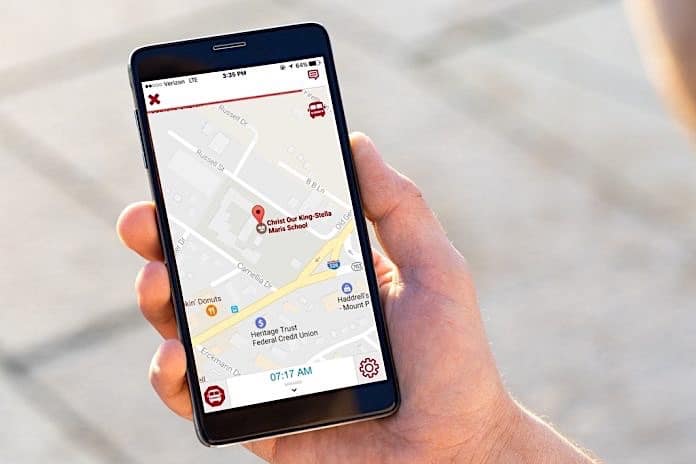Are there inherent inefficiencies that are still an issue with school bus and student tracking apps? Are there issues with other new-generation high-tech products, such as lane change and braking software?
A few high-tech companies serving the industry recently weighed-in on current challenges being faced by student transporters, how they are being addressed and what needs remain.
One of those companies, school bus tracking app provider SafeStop, recently completed its review of the 2017-2018 school year and concluded that today’s school bus GPS systems are most often used to track bus location, map out the most efficient routes and track specific incidents.
However, SafeStop—which said it doubled its customer base for a fourth straight year for a total of 200 school districts throughout North America (75 of those districts have joined since January)—found that many school districts have yet to use all of their GPS systems’ capabilities. SafeStop determined that districts can use GPS to wring even greater cost-savings out of their operations, by reducing excessive engine idling, using more preventative maintenance, reducing driver absences and more. Failing to capitalize on the new technology could result in poor fuel purchasing decisions and limited fleet planning, the company added.
G.P. Singh, CEO and founder of transportation software analytics firm ByteCurve, recalled that only a few years ago, Zonar Systems cited an industry GPS adoption figure of around 30 percent. Today, STN’s September 2018 technology trends data sample of over 100 participants reported a current school bus GPS usage rate of about 48 percent. Singh said ByteCurve’s software helps improve safety, operational efficiency and compliance with its continuous updates.
SafeStop also identified in its evaluation of the last school year, that unresolved issues on school bus route accuracy continue to negatively affect the accuracy of GPS-based apps. The result can be a lack of parental trust in the technology that was originally developed to keep them—and school administrators—apprised on the location and real-time arrival of school buses.
Many district operations nationwide build school bus routes prior to school year start-up, and modify them when the student population changes mid-year, or the number of bus drivers fluctuates. SafeStop executives said there are opportunities to make more sizeable updates to bus routes throughout the school year, so that routes can be analyzed and optimized on a quarterly or biannual basis. That way, school districts can capture the most benefits from what they’re spending, from the greatest number of months that follow after the date each route improvement has been made.
Antonio Civitella, president and CEO of school bus routing and management firm Transfinder, is taking things a step further. He agreed that school bus location apps are only as good as ongoing route optimization practices. Those practices include daily routing software updates to each bus stop location, who is driving the route, and sudden delays that have been caused by traffic or weather. But if these factors aren’t all being continuously and instantaneously updated to the app, Civitella told School Transportation News the bus location and arrival time communicated to parents will be incorrect, leading to frustration and even anger.
Civitella promised that the company’s new update to Routefinder PLUS, which is being rolled out to customers this fall, provides even faster results—by “self-healing” route data before the start of each day’s operations, through use of artificial intelligence.
“Parent apps will become standard operating procedures,” he believes. “The problem with those apps today is that parents expect updated information in the morning,” Civitella said. “It requires a lot of resources to be thrown at that (request). Parents don’t understand that, they just want it, (which creates) an immense amount of work. What pieces can be eliminated to let the software do it at night, so the first thing in the morning, the updated route info or student bus schedule is available on the app? The driver tablet can be updated at 3 a.m., so by 5:30 a.m., (there is a) brand new route sheet (that shows) exactly which kids need to be picked up, (so the) parent app is updated.”
Civitella has concluded that automated route optimization eliminates steps. “RoutefinderPro is over 20 years old. Adding new functionality created too many steps to the existing product. We realized we could take a new functionality that (originally) took 4-5 steps, (but) now takes one step or one click,” he said.
Eliminating steps can therefore reduce user frustration, smooth out operations, and help make everyone happier, especially parents.














